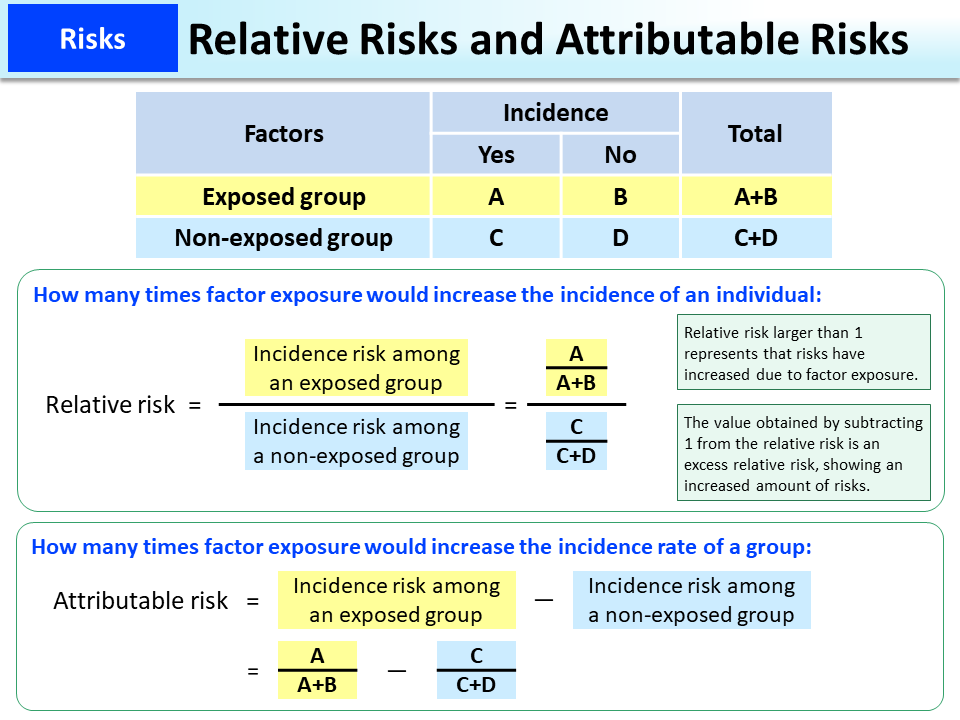Relative Risks and Attributable Risks
A relative risk represents how many times a certain factor increases the risk of an individual exposed thereto. In epidemiology, the term “risk” normally refers to a relative risk. The value obtained by subtracting 1 from the relative risk is an excess relative risk and shows an increased amount of risks compared with a group free from risk factors. There is also an attributable risk that represents how much a certain factor increases the incidence or mortality rate of a group.
Suppose a group is exposed to some risk factor while another group is not, and there are 2 patients of a certain disease among one million people in the non-exposed group, while there are 3 patients among one million people in the exposed group.
Then, an increase in the number of patients from 2 to 3 is construed to mean that the relative risk has increased by 1.5 times from the perspective of how much more an individual is likely to develop a disease.
On the other hand, as an attributable risk focuses on increases in the number of patients in a group, the increase is construed as one in a million, that is, an increase of 10-6 in risk.
- Included in this reference material on March 31, 2013
- Updated on March 31, 2019

